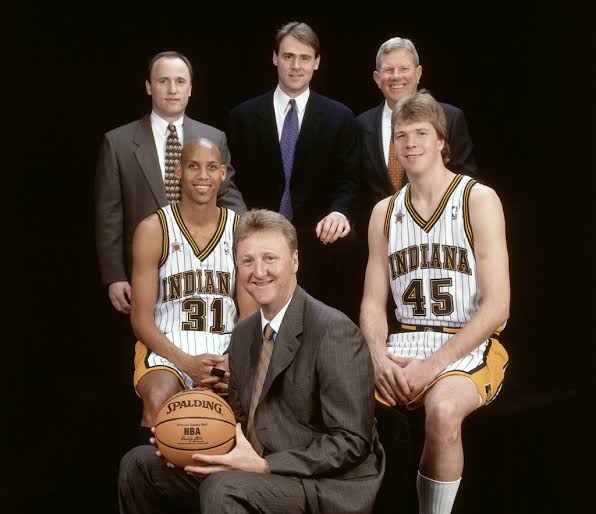Rik Smits, a former center for the Indiana Pacers, recently opened up about his time playing under Larry Bird, who served as the head coach of the Pacers from 1997 to 2000. Smits’ reflections provide a fascinating insight into Bird’s unexpected coaching style and approach, which contrasted sharply with his legendary on-court persona.

When Larry Bird took over as head coach of the Pacers, expectations were high. Bird was renowned for his intense competitiveness, tenacity, and no-nonsense attitude during his Hall of Fame playing career with the Boston Celtics. These qualities, many assumed, would translate directly into his coaching style. However, Rik Smits found that Bird the coach was markedly different from Bird the player.
Smits noted that Bird’s approach to coaching was surprisingly calm and composed. Instead of the fiery, passionate demeanor he displayed on the court, Bird as a coach was measured and strategic. He was not prone to outbursts or intense confrontations, which was a stark contrast to the way he played. Bird’s coaching style was more about fostering a team-oriented environment, focusing on the collective performance rather than individual showdowns. This was unexpected for Smits, who had anticipated a more aggressive and direct leadership style.
Bird’s philosophy was rooted in a deep understanding of the game, emphasizing fundamentals and smart play over sheer intensity. He was less about yelling and more about teaching. Bird would dissect plays with precision, breaking down the nuances of the game for his players. This analytical approach helped the team develop a more comprehensive understanding of basketball, fostering both individual and team growth.

Smits appreciated Bird’s ability to communicate effectively without resorting to harsh criticism. Bird believed in the potential of his players and knew how to get the best out of them through positive reinforcement and constructive feedback. He respected his players and expected the same in return, creating a professional but amicable atmosphere in the locker room.
Bird’s unexpected coaching style also extended to his relationship with his players. He was approachable and willing to listen, qualities that earned him the respect and trust of the team. Smits found that Bird’s calm and collected demeanor helped stabilize the team during high-pressure situations. Instead of escalating tensions, Bird’s presence had a calming effect, allowing the players to focus on their game rather than the distractions around them.
Under Bird’s leadership, the Pacers saw significant success. The team reached the Eastern Conference Finals three times and made it to the NBA Finals in 2000. Bird’s ability to manage egos, foster teamwork, and maintain a strategic focus were key elements in the Pacers’ achievements during his tenure. His coaching legacy, though brief, left a lasting impact on the team and its players.
For Smits, playing under Bird was a learning experience. It shattered his preconceived notions about how Bird would handle the role of a coach. Instead of the intense, driven individual he remembered from Bird’s playing days, Smits encountered a thoughtful, strategic leader who knew how to harness the strengths of his team. Bird’s approach not only contributed to the Pacers’ success but also provided valuable lessons for Smits and his teammates.
In retrospect, Rik Smits’ reflections highlight the multifaceted nature of Larry Bird’s basketball intellect. Bird’s transition from a legendary player to a successful coach was marked by his ability to adapt and apply his deep knowledge of the game in ways that were both unexpected and effective. Bird’s tenure as head coach of the Pacers remains a testament to his versatile and profound understanding of basketball.



